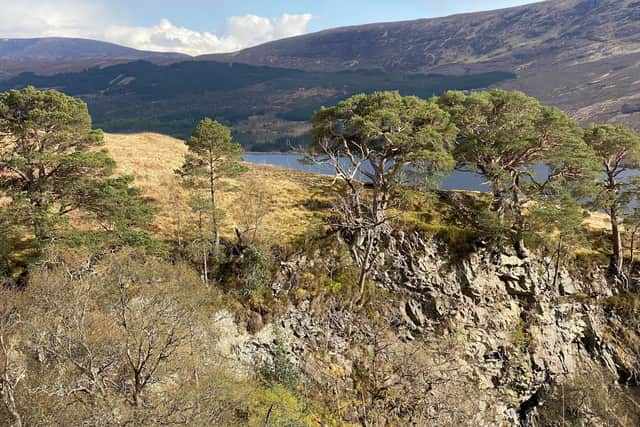Search to find and save Scotland’s ‘lost’ ancient pinewoods, as Caledonian forest dates back to last Ice Age
A search for “lost” ancient Scots pinewoods with roots stretching back to the last Ice Age is getting under way in Scotland.
The quest aims to uncover the last remnants of the country’s old-growth native pinewoods so the trees can be saved for posterity before it’s too late.
Advertisement
Hide AdAdvertisement
Hide AdThe Caledonian forest – characterised by the iconic Scots pine, Scotland’s official national tree – is globally unique and support an abundance of wildlife, including rare species such as red squirrels, capercaillies and crossbills.
Yet just a tiny fraction – less than two per cent – of these original forests, which once covered much of the Highlands, survives.
Just 84 individual chunks of Caledonian pinewoods are officially recognised, having been last documented more than a quarter of a century ago, but more are believed to exist.
Now environmental charities Trees for Life and Woodland Trust Scotland are on a mission to discover any uncharted wild forests so they can be identified and restored before they are lost forever.
Historical maps and documents dating as far back as the 1500s, as well as anecdotal reports, will help guide their search.


The Wild Pine project is starting out in the western Highlands, where Scots pines form part of Scotland’s rare Celtic rainforest – temperate Atlantic woodlands that are scarcer than their tropical counterparts.
Lost pinewoods are at particular risk because they are unrecognised and undocumented, with grazing by animals such as sheep and deer posing a major risk to their regeneration.
Once potential sites are found, historical, ecological and landscape evidence will help establish whether they are wild or planted and their health and resilience will be assessed.
Advertisement
Hide AdAdvertisement
Hide AdThe charities will then work for the recognition and recovery of the discovered wild pinewoods, including by presenting findings to landowners and managers.


“We want to find them, assess their condition and revive them before they are lost forever,” said Jane Sayers, Wild Pine project officer.
“Finding these pinewoods requires a lot of detective work.
“They are often small and remote, hidden in ravines, safe from deer.
“Pines, or their remains, are often found scattered among birchwood too.”
The Scots pines of the Caledonian Forest are directly descended from the first pines to arrive in Scotland following the last ice age, arriving about 7000BC.
The forest reached its maximum extent about 5000BC, after which the Scottish climate became wetter and windier – significantly shrinking the extent of the woodlands by 2000BC.
From that date, human impacts – including grazing by livestock – reduced it to its current size.
These surviving remnants have adapted genetically to different Scottish environments, with ecological characteristics forming an unbroken 9,000-year chain of natural evolution and a distinct variety of soils, vegetation and animals.
The Wild Pine project is funded by Woodland Trust Scotland, thanks to support from players of People’s Postcode Lottery, and Trees for Life, backed by the TreadRight Foundation.
Comments
Want to join the conversation? Please or to comment on this article.